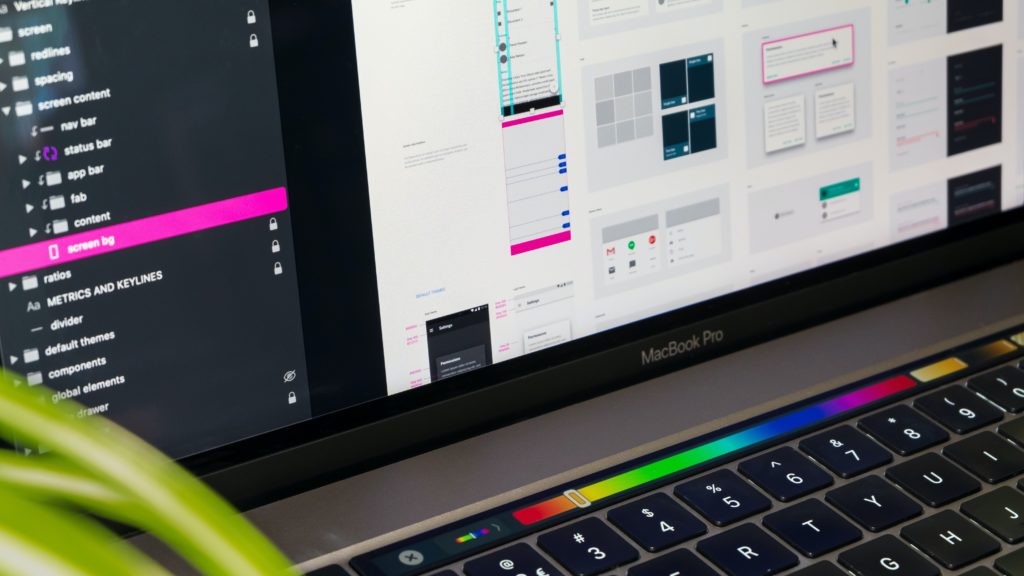
Hi! I’m Igor Artiukhov, the Lead Designer at NIX United. During my nine years in IT, I’ve become acquainted with various domains and participated in the development of large products. In my current project, I regularly interact with the client’s team, so this article is written based on real experience and will be useful to all designers who have more to communicate with clients, or who are already involved in similar rallies.
Communicating with developers and the client is also an important part of design work that we should all improve on. This skill is referred to as a soft skill. Research by Harvard, Stanford, and the Carnegie Foundation prove that 85% of career success depends on soft skills. One of these skills is building the right communication with the client.
Although I’ll be speaking from the perspective of the designer, this article will be useful to anyone who works with people who decide the outcome of their work. Newbies may overlook their responsibilities, believing that once they receive an assignment, they can leave for a month and then quietly email a link to the completed design. As a result, they repeat the same mistakes, risking their professional reputation and future success.
There is no such thing as a bad client or a bad designer—everything works out when you set up effective processes in your team. However, someone must be in charge of creating and managing these processes. After reading this article, I’m confident you’ll be able to fill that job.
By “client” I broadly refer to freelance customers, managers, product owners, and developers—that is, everyone involved in the creation of a product. Something else may refer more directly to the owners of the business or to members of your community.
Being an Expert Entails Successfully Communicating with Your Team and Clients
The client, the manager, and the developer do not have the same level of expertise as the designer, thus their opinions are not authoritative. However, it isn’t as straightforward as that. You must feel and communicate your position of expertise to the team—you were approached for what you do best—at all stages of the project at all times. It doesn’t mean that you should be defensive or defiant when you receive feedback.
It’s crucial to remember the proper way to communicate. We’re professionals, therefore we need to pay attention to what the other person has to say. The client isn’t a designer, but he knows a lot about his business, so we should probably listen to his advice. The project manager or developer may also express their opinions, and they, too, must be heard. After all, among them may be individuals with wise expertise and hundreds of projects under their belts, whereas you may be, for example, a complete rookie.
Getting the Process Right is Half the Battle
Ideally, your lead or manager would be somewhat accountable for this, but the designer must also be involved. It begins long before you draw the first pixel and continues until the final version of the design is completed.
Show Your Portfolio
The client should be aware of who he is dealing with so that there will be no unreasonably high expectations. There are designers who practice various styles of work (brutalism, skeuomorphism, flat, etc.). When a client visits an expert, he is aware of what he will receive, but the intended outcome necessitates further discussion. As designers, we inquire if the individual has seen our work, and if so, everything will be okay; the client will receive a design in the manner in which we are accustomed to working. If you don’t work in one direction and have a varied portfolio, you can inquire about what the consumer likes and doesn’t like. Finally, it will protect you from judgment.
First Conversation
All steps are vital, but this one is likely the most important. Asking the right questions will help you avoid making a mistake. Questioning the client is essential since it demonstrates your interest and breadth of knowledge. You can ask the client questions that he doesn’t expect and learn information he may have thought was not relevant to mention.

I’d like to share 9 client communication techniques that I’ve learned from my own experience:
- Prepare for the conversation. Make a list of questions based on your early research. This shows your professionalism and your drive to build something that fulfills the client’s expectations as well as your company’s objectives. Analyzing competitors, market segments, and the client’s own business are all part of this form of research. The most important thing for you to do is to think about questions that you might have while working on a design. The responses of your client will guide you in the proper direction. If you’re going to be interviewed in English, be sure you’ve done your homework. Even if it’s in Russian, you’re likely to feel worried if you’ve never had to deal with clients on a regular basis. Preparation will boost your confidence, and reading the questions aloud will allow you to go over them again and filter out the unnecessary ones, as well as restate some questions to achieve a more accurate response.
- Don’t be afraid to ask too many questions. As opposed to in-depth interviews with users, the client is a party who is deeply interested in the final result. He wants to receive the best project possible, thus he’s willing to commit several days to provide you with all of the necessary details. The extent to which the client’s responses are thorough, among other factors, will determine the outcome of your effort. Users, on the other hand, may not have a lot of time to communicate with you.
- You don’t need to send the client a brief with a list of questions. Nobody likes filling out lengthy questionnaires. It’s best to communicate in real-time. You can rearrange the questions or offer more in-depth clarifying questions during the conversation.
- In your questions, avoid using jargon. Although the client is an expert in his field, he may lack design knowledge. Don’t try to impress him with your cool knowledge of some of the nuances of your trade at his expense.
- Don’t offer solutions right away during the conversation. You haven’t learned everything yet, and your solution may be at odds with the rest of the conversation. Perhaps when you begin to design, you’ll come up with better options.
- Tell your client about the steps that you think are necessary to implement the project. Discuss all of the processes and the upcoming steps, including particular checkpoints where you will demonstrate intermediate results. You don’t want the client to think this might end up a horrible scenario in which you receive the technical task and then vanish for a month. It is critical to maintain contact with the client. There will be no unpleasant surprises if the job process is transparent.
I used to handle it this way: first, I sent an initial estimate to the client, and then, if he inquired as to why the price was so high, I explained that the project would be broken down into phases, and what I would perform at each one. Now, I prefer to discuss all of the design elements before pricing, and I don’t charge an upfront fee for the full project, but only for the first phase.
- Document the conversation. You can do this via audio or video — or with a pen, but this will take time, and the client will have to wait while you take notes. You can record the conversation, transcribe it later, and learn something new that you didn’t notice during the conversation.
- Confirm in writing any agreements about modifying project tasks. Everything you’ve said in words can be interpreted in a variety of ways by various people — particularly if the client is a foreigner and a language barrier exists. During the conversation, everyone picks up on a lot of information, and some of it may go unnoticed. So, after conversing and transcribing the audio, make a list of the issues you talked about and what you agreed on, then have the other side confirm it in writing.
- Don’t work for free. People will only value what they have already paid for. Since it will be viewed as something bad, free work can result in a lot of criticism and revisions. Make sure to address financial questions as soon as possible. You’re a designer, not an amateur artist who makes things for fun. You’re practicing a craft, which means you should be compensated for it, so feel free to request as much as you believe you require. Remember that what you do is not simply for your own gain, but for the benefit of the client’s business. Also, talk to the client about how price adjustments will be handled. The price you ask for will be justified if you provide a detailed explanation of the work — including its challenges and timeframes — at each stage.
Presenting Design Tasks
Divide your project into as many stages as you can and deliver a presentation for each stage. Never present the outcome of your work without first explaining what you did and why you did it. No matter how many meetings and presentations you have later, the first impression often dominates and is often decisive. A PDF presentation with a description and rationale of all decisions should be provided at the very least. At most, a personal meeting with a full account of what was done, how you did research (qualitative or quantitative), what determined the user flow, wireframes, mood boards, and transitions from rough sketches to fully-constructed design concepts. To speed things up, you can do that with the help of AI presentations.
If you only give the client a user flow, for example, he can’t grasp the full scope of your design process. He will, however, be able to provide input if you explain what it is and how to work with it. The most important thing is to not leave the client in the dark about the final outcome. This result may appear clear to you, but it’s the consequence of a process that was hidden behind the scenes and that no one saw but you. One of your obligations is selling all stages of the design.
Of course, for each live or recorded presentation, all feedback should be recorded, and next measures should be agreed upon and confirmed in writing. Ideally, we’d also keep in touch with the client on a daily basis and show him how far the project has progressed.

Responding to Complaints
Finally, you’ve arrived at your first presentation (or lack thereof). “This is not the conclusion we expected,” you hear after all the processes have been discussed. Exhale slowly and deeply. It’s important to remember that this criticism isn’t personal.
I came across a large project early in my career that had been initiated by a prior developer in Cyprus. He planned to create an online ad service and add a slew of features that most clients wouldn’t use, such as machine translation of ads into all languages. During the design process, he would instruct the designer where to position a button or what fonts to use, as though he was in charge of everything.
“Boy, don’t tell me how to design,” he said, interrupting all of my attempts to suggest something more fitting. He didn’t want to hear about research or user interviews, of course. He believed that users were unsure of what they desired. Because the client’s impact on the final result was too significant, this project did not make it into my portfolio. I promised to perform everything that was demanded of me at the moment, but I wouldn’t work with such a client nowadays — it’s better to conserve your energy for clients who respect your role as the expert.
Any revisions are a standard part of the project building process. If you read Steve Jobs’ history, you’ll see how demanding he was and how long it took his team to polish whatever they created. Even the top specialists in the world that Jobs hired had to cope with revisions.
Is it possible that the objections you faced had something to do with the user interface? It’s bad enough when a client expresses his dissatisfaction with the design without providing specifics. In that instance, we should ask leading questions in order to figure out what’s going on and how to repair it. We should never debate or challenge the client while he is offering feedback.
Start by trying to figure out what happened. It’s possible that the client’s concerns are correct, and your design has to be changed. Turn off your ego and try to adjust some aspects of the design to his liking.
If the UI adjustments based on the client’s feedback aren’t risky, it won’t affect the design in any way. Then you can consider rounding out the button or increasing the size of the logo. Why not give in to the client’s demands?
The worst-case scenario is when a client has poor taste. It will be difficult to persuade him to change his views. He’s probably seen your work, and you’ve shown him your mood board and talked about his preferences. Everything was okay until he requested a mirror background or something else odd. In this circumstance, all we can do is draw on design trends, show him useful examples of good solutions, and try to reach an agreement. Explain design rules, how they are used in the layout, and what options for improvement there are.
If that doesn’t work, you only have two choices. The first option is to end your involvement in the project. You won’t be able to include this project in your portfolio, and it may damage your reputation as a designer or your entire team. The second alternative is to follow the client’s instructions, but not include you as the designer in the footer, and later build a presentation on Behance in the way you want to be.
It will be a little easier to make improvements here if there are comments on UX, in my opinion. After all, we have hard facts in the form of our own research or secondary data from other academics. Work will proceed in a similar manner. We correct it if we can, and if we can’t, we resort to real-life instances, such as our own or others’ research.
These websites include a wealth of important information on UX research:
From my experience, if a person is actively involved in a project, he will see the results far more favorably. If your project allows it, actively involve the client in a collaborative effort (and workspace) as much as is feasible (of course, only if he’s ready for it). Hold a workshop on design thinking with him, for example, where you may collaborate on a user flow and wireframe, or compare and contrast competitive interfaces. Ultimately, your goal should be to make the process smooth and clear to avoid hearing “This is not what we require.” This will help to maintain timely contact with the client and the entire team, as experience has shown. Be open, proactive, and patient, even if the client’s suggestions are unusual or incorrect in your opinion. Above all, maintain a professional demeanor in all you do. Exceed expectations not only in terms of the outcome but also in terms of communication. You can usually tell when you’re taking an “It’s good enough” approach, so avoid doing this. After all, anything you make has the potential to be excellent. Make an effort to comprehend this and be methodical in your approach. And, if you receive any requests for revisions, keep in mind that there is no such thing as a perfect design — there is simply a plethora of excellent solutions to the same issue.
Where to Learn More
A designer should be adept at communicating with all stakeholders—external clients as well as internal ones. These include engineers, marketers and upper management. UX designer and author of Build Better Products, Laura Klein shares industry best practices for making communication painless in agile environments in this course:
If you’re getting started with UX Design but do not have the capacity to join an intensive bootcamp, then the part-time, remote offering from the Interaction Design Foundation (IxDF) might be in your comfort zone. With personalized mentor sessions and a peer-based global cohort, IxDF Bootcamps cater to different specializations: choose from the introductory UX Fundamentals to the more specialized User Research and User Interface and the 100% practical UX Portfolio and Careers.
